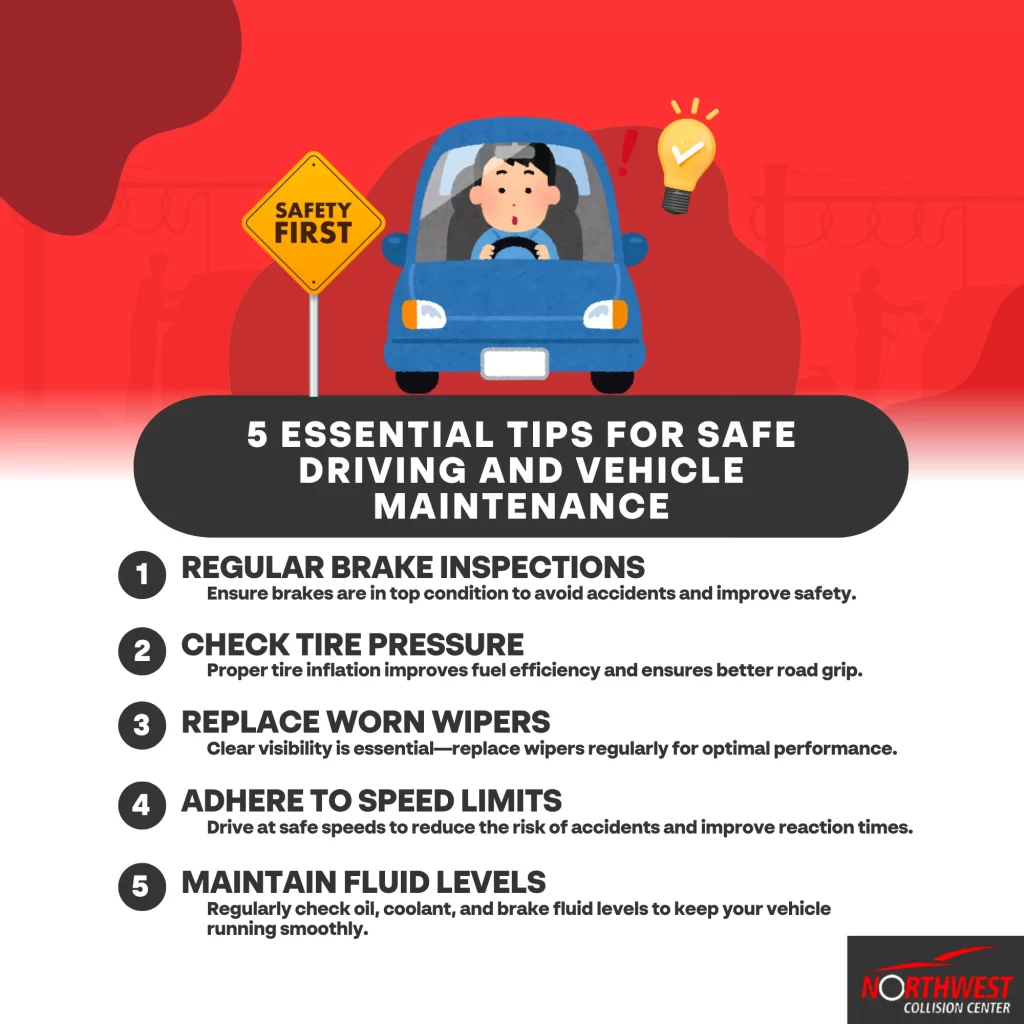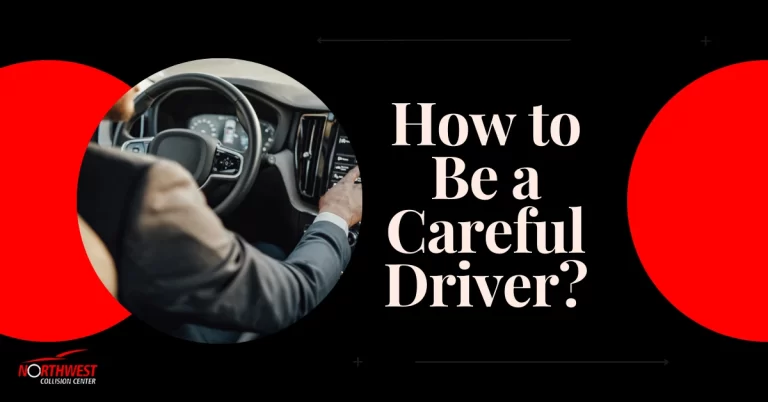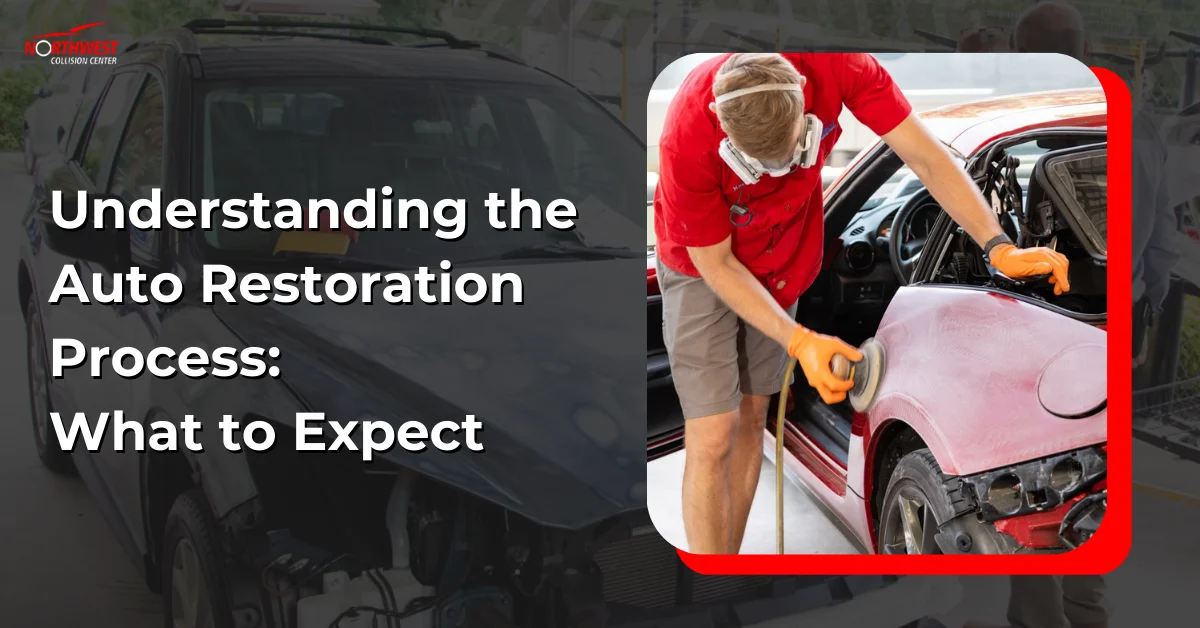To be a careful driver, you need to embrace defensive driving. Stay alert to your surroundings and anticipate potential hazards. Keep a safe distance from the vehicle in front of you to allow for sudden stops. Always use your mirrors and check blind spots before changing lanes. Avoid distractions; put your phone away and focus on the road. Adhere to speed limits and adjust your speed according to weather conditions. Before you hit the road, perform a quick safety checklist on your vehicle. Master these habits, and you’ll drive more safely—there’s more to explore for complete road safety assurance.

Key Takeaways
- Stay alert and proactive, anticipating potential hazards to ensure prompt reactions while driving.
- Maintain a safe following distance to allow for emergency stops and avoid collisions.
- Adhere to speed limits and adjust speed in adverse conditions to enhance safety.
- Regularly check mirrors and blind spots before changing lanes or turning to ensure clear surroundings.
- Eliminate distractions by focusing entirely on the road and keeping mobile devices out of reach.
How Do I Drive Defensively?
Driving defensively means staying alert and being proactive on the road to prevent accidents. When you engage in careful driving, you anticipate potential hazards, allowing you to react promptly.
Keep a safe distance from the vehicle ahead, as this gives you ample time to respond in case of sudden stops. Always check your mirrors and blind spots before changing lanes or making turns; this is crucial for maintaining driver safety.
Being aware of your surroundings is essential. Watch for pedestrians, cyclists, and other road users, and be prepared for unpredictable behavior.
When conditions are less than ideal—like rain or darkness—adjust your speed accordingly. Safe driving also involves obeying traffic signals and signs.
Moreover, stay focused by avoiding distractions, such as your phone. If you find your mind wandering, take a break to refresh your concentration.
Top 4 driving safety tips
Staying safe on the road involves more than just defensive driving habits. To truly embody the careful driving definition, you need to adopt a proactive approach to driving safety.
Here are four essential safe driving tips to keep in mind:
- Stay Focused: Avoid distractions like texting or adjusting the radio. Your full attention should be on the road, ensuring you’re aware of your surroundings.
- Follow Speed Limits: Adhering to speed limits is vital. It gives you more time to react to unexpected situations, enhancing overall driving safety.
- Use Turn Signals: Always signal your intentions when changing lanes or turning. This simple act communicates with other drivers, preventing potential accidents.
- Maintain a Safe Following Distance: Keep a safe distance between your vehicle and the one in front of you. This provides ample time to stop or maneuver if necessary, contributing to careful driving practices.
Speeding, traffic, & road safety laws
Speed limits are more than just numbers on signs; they’re crucial regulations designed to enhance road safety for everyone. When you ignore these limits, you not only jeopardize your safety but also the safety of others on the road.
Being mindful of your speed is essential; it allows you to react appropriately to sudden changes, like pedestrians or other vehicles.
Traffic laws encompass more than speed limits—they include regulations on lane changes, traffic signals, and right-of-way. To drive safely, familiarize yourself with these laws, as they help maintain order on the road.
Remember, being careful while driving means adhering to these rules consistently.
Additionally, driving at an appropriate speed reduces the severity of accidents. The faster you go, the less time you have to react, and the more likely you’re to cause harm.
Prioritize driver safety by avoiding distractions and staying within the speed limits.
Ultimately, respecting speeding and traffic laws is a crucial aspect of being a responsible driver. Stay informed, follow the rules, and always prioritize safety—both yours and those around you.
Safety Checklist
A solid safety checklist is essential for every driver to guarantee a smooth and secure journey. Knowing how to be a careful driver means taking proactive steps to ascertain your vehicle and surroundings are safe.
Here’s a quick checklist to follow before you hit the road:
- Tire Condition: Check tire pressure and tread depth. Properly inflated tires improve handling and reduce the risk of blowouts.
- Fluid Levels: Confirm that oil, coolant, and brake fluid are at appropriate levels. Low fluids can lead to engine or brake failure, compromising safety.
- Lights and Signals: Test your headlights, brake lights, and turn signals. Visibility is imperative, and functioning lights help you communicate with other drivers.
- Windshield Wipers: Examine wipers for wear and verify your windshield washer fluid is full. Clear visibility is significant, especially in adverse weather.
Frequently Asked Questions
How Can I Maintain My Car’s Aesthetics While Driving Carefully?
To maintain your car’s aesthetics while driving, avoid potholes and rough roads, park carefully, and regularly wash and wax your vehicle. Protecting your car guarantees it stays visually appealing and retains its value over time.
What Should I Do if I Experience a Minor Accident?
If you experience a minor accident, stay calm and assess the damage. Exchange information with the other driver, document the scene, and consider contacting a professional technician to evaluate and restore your car’s condition.
How Does Weather Affect Careful Driving Practices?
Weather greatly impacts driving conditions. You should adjust your speed and increase following distances in rain, snow, or fog. Always stay alert and be prepared for sudden changes, ensuring your safety and that of others.
Are There Specific Car Features That Enhance Driving Safety?
When you’re cruising down the highway, features like lane-keeping assist, adaptive cruise control, and automatic emergency braking truly elevate your driving safety. These innovations help you stay alert and avoid potential accidents effectively.
What Are the Benefits of Regular Car Maintenance for Safe Driving?
Regular car maintenance boosts your vehicle’s performance and reliability, reducing the risk of breakdowns. It guarantees safety systems function correctly, enhances fuel efficiency, and prolongs your car’s life, ultimately saving you money and providing peace of mind.
Conclusion
Becoming a careful driver isn’t just about following rules; it’s like wielding a superhero’s power behind the wheel! Every time you choose to drive defensively, you’re not just protecting yourself—you’re shielding your passengers and everyone else on the road from potential chaos. Embrace these strategies, and you’ll transform your driving into an art form, creating a safer world with each trip. So gear up, stay alert, and let your thoughtful driving become the ultimate road revolution!










